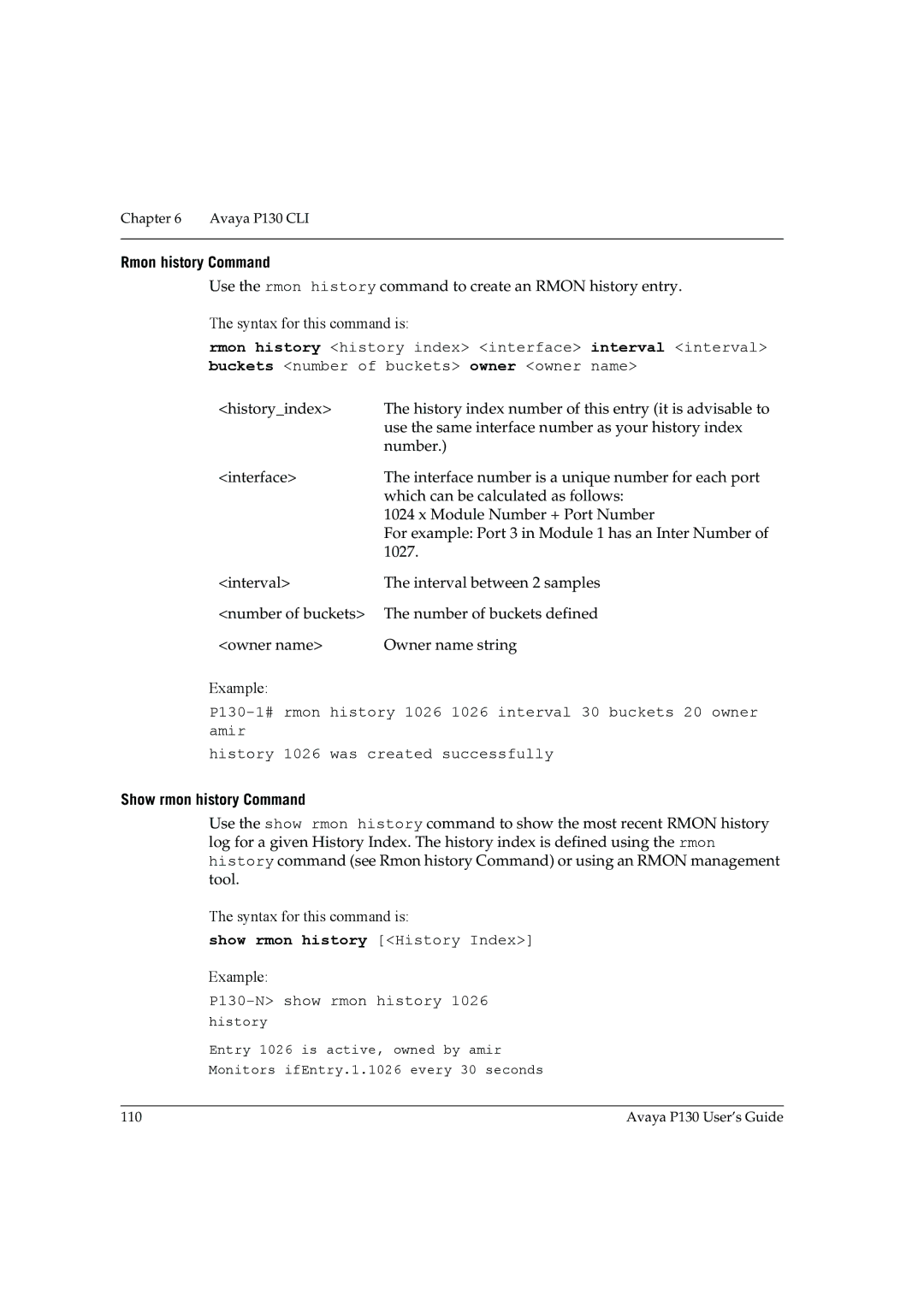
Chapter 6 Avaya P130 CLI
Rmon history Command
Use the rmon history command to create an RMON history entry.
The syntax for this command is:
rmon history <history index> <interface> interval <interval> buckets <number of buckets> owner <owner name>
<history_index> | The history index number of this entry (it is advisable to |
| use the same interface number as your history index |
| number.) |
<interface> | The interface number is a unique number for each port |
| which can be calculated as follows: |
| 1024 x Module Number + Port Number |
| For example: Port 3 in Module 1 has an Inter Number of |
| 1027. |
<interval> | The interval between 2 samples |
<number of buckets> | The number of buckets defined |
<owner name> | Owner name string |
Example:
history 1026 was created successfully
Show rmon history Command
Use the show rmon history command to show the most recent RMON history log for a given History Index. The history index is defined using the rmon history command (see Rmon history Command) or using an RMON management tool.
The syntax for this command is:
show rmon history [<History Index>]
Example:
P130-N> show rmon history 1026
history
Entry 1026 is active, owned by amir
Monitors ifEntry.1.1026 every 30 seconds
110 | Avaya P130 User’s Guide |
